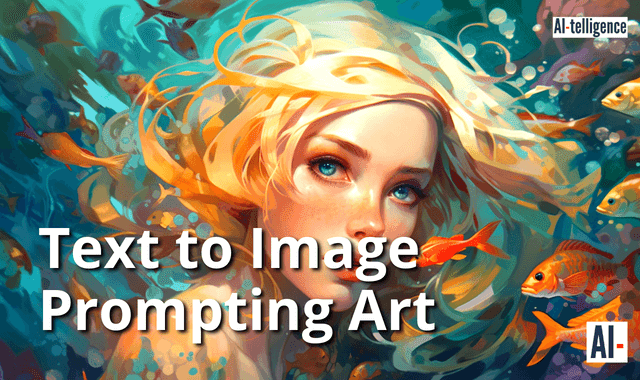Text to Image Prompting Art: The Future of Creative Expression
 Text to Image Prompting Art |
Text-to-Image Prompting Art: The Future of Creative Expression. Imagine a world where all it takes is a few words to create a stunning piece of art.
Where you can simply type in a sentence, hit enter, and watch as a beautiful painting or photograph appears before your eyes. This may sound like science fiction, but with the rise of "text-to-image prompting art", it's quickly becoming a reality.
Text to image
Text-to-image is a technology that uses natural language processing and machine learning to generate images based on text prompts.
Simply put, you type in a description or a few keywords, and the algorithm creates an image based on that input.
This artificial intelligence has already been used to create everything from surreal landscapes to abstract portraits.
The Benefits of Text-to-Image Prompting Art
But what makes text-to-image prompting art so exciting is its potential to revolutionize the art world. Here are just a few of the benefits of this technology:
Inspiring Creativity: For artists who struggle with creative blocks, text-to-image prompting art can be a powerful tool for generating new ideas. By giving them a starting point or a prompt, artists can overcome the blank canvas syndrome and begin exploring new directions in their work.
Democratizing the Art World: Text-to-image prompting art also has the potential to make the art world more accessible to a wider range of people. With this technology, anyone with access to a computer or a smartphone can create their own art, regardless of their background or training.
Enhancing Collaboration: Text-to-image prompting art can also be a powerful tool for collaboration. By using text prompts to communicate their ideas, artists can work together to create something truly unique and unexpected.
The Controversies Surrounding Text to Image Prompting Art
Of course, with any new technology, there are also concerns and controversies. One of the biggest criticisms of text-to-image prompting art is that it lacks authenticity and originality.
Because the algorithm is doing the bulk of the creative work, some argue that the resulting art is not truly the product of human imagination.
Another concern is the potential for abuse. Just like any other technology, text-to-image prompting art can be used for harmful purposes, such as reproducing harmful stereotypes or perpetuating biases.
To address these concerns, it's important to have responsible use and ethical guidelines in place. This could include things like ensuring that the algorithm is trained on a diverse range of images and preventing the reproduction of harmful content.
The Future of Text to Image Prompting Art
Looking to the future, the potential for text-to-image prompting art is limitless. As technology continues to advance, we may see even more sophisticated algorithms that can create even more intricate and detailed images. And the potential applications for this technology extend far beyond the world of art.
For example, text-to-image prompting art could be used in the field of education to create more engaging and visually stimulating learning materials. Teachers could input descriptions of historical events, scientific phenomena, or literary scenes, and watch as the algorithm generates corresponding images.
Similarly, businesses and marketers could use text-to-image prompting art to create more effective advertising campaigns or product designs. By inputting descriptions of their target audience or product features, they could generate images that more accurately reflect their brand.
Ultimately, the future of text-to-image prompting art is exciting and full of possibilities. We may soon live in a world where anyone can easily create their own personalized art using nothing more than a few words. But as with any new technology, it's important to approach it with caution and a critical eye.
We must ensure that the potential benefits of this technology are not outweighed by its potential risks.
In conclusion, text-to-image prompting art is a fascinating and promising technology that has the potential to transform the art world and beyond. While there are concerns about its authenticity and potential for abuse, these can be addressed with responsible use and ethical guidelines.
As we look to the future, we can only imagine the countless ways this technology will continue to inspire and enhance our creative expression.

.png)
Comments
Post a Comment